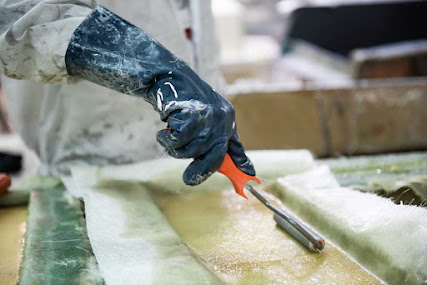Are you looking for DIY miter saw table plans? Do you want to make a DIY portable miter saw table? If so, this is the blog post for you! We will provide instructions on how to build your own DIY portable miter saw table. Keep reading if you are interested in building one of these tables today. The DIY portable miter saw table is very easy to build, and it can help you improve your DIY experience.
The first step for this DIY project is to purchase the materials needed:
You will need wood, screws, bolts, a miter saw stand (if not building one), and other related items that we explain in detail below.
Next up on our list of steps: cut all pieces from wood as required by the design/plans chosen! Wood dimensions vary depending on what type of DIY portable miter saw table plans are chosen; therefore, users should refer to their specific plan before cutting any piece. We also recommend using either a hand or power saw during these cuts according to preference/abilities.
Finally after completing those two steps, you are ready to assemble the DIY portable miter saw table! We recommend using a drill/screwdriver for this step. However, DIYers may choose to assemble the DIY portable miter saw table without one. If you do decide to use a drill/screwdriver for this step, make sure that it is plugged in and fully charged before beginning any assembly. For extra safety during construction we also recommend putting on gloves or using clamps during assembly as well!
Check out the instructions below if you need further details about how to build your own DIY portable miter saw table. DIYers can also refer to the miter saw table plans they purchased for more details about how to build these tables.
Instructions to make a DIY portable miter saw table:
First, you've to find the divider's height, then mark the MDF base, cut it to size and attach that with screws. Now measure how far back your saw is from where you want to place the DIY portable miter saw table. Cut a piece of plywood for this purpose following DIY plans guidelines. Attach it on top of DIY portable miter saw table's frame but make sure no part is overhanging beyond the edge of front stretcher or upper stretchers' side-pieces!
Now make sure all parts are in alignment before adding any fasteners since they'll be difficult to access once assembled. Fasten lower section onto legs using large hex bolts & washers through sides into leg support pieces at bottom corners, then add nuts up against sides inside miter saw stand.
Drill pocket holes in DIY portable miter saw table front stretcher's edge to attach it onto the tabletop, then fasten top section onto legs with screws & washers through sides into leg support pieces at bottom corners. Finally add nuts up against sides inside miter saw stand.
Now you can turn your DIY portable miter saw table upright and place it on its wheels! There is no need for any further assembly unless otherwise stated according to plans purchased by DIYers. Place a sheet of plywood or MDF across the frame (between upper & lower stretchers) where workpiece will be cut - this adds rigidity to DIY portable miter saw table when cutting larger material like lumber or thick sheets.
You are now ready to make any project with your DIY portable miter saw table! If you need more details about how to build this table, refer to the DIY plans purchased.After reading this article, you should know how to make a DIY portable miter saw table. The process is not difficult and the end product will be very useful for anyone who has their own workshop or garage space. If you are interested in making one of these tables for yourself, then all that's left to do is get started! Remember to measure twice before cutting once so your project doesn't go wrong halfway through. Good luck with your project!




